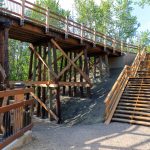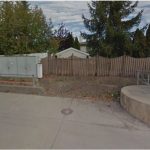Arlington Bridge
Connecting Winnipeg’s communities.
Project overview
The existing Arlington Bridge is situated over a Canadian Pacific (CP) railway yard in Winnipeg, Manitoba. The century-old bridge was nearing the end of its usable service life and required a replacement. SMA worked as a subcontractor to Stantec and carried out value engineering using SAVE International’s well-established approaches, augmented with comparative analysis, using the Analytical Hierarchy Process and utility theory.
Challenge
To best utilize stakeholder time and achieve the highest quality output from the workshop sessions, the value engineering, risk analysis, project chartering, and Value for Money studies were distributed across three separate sessions in two phases.
During the first phase, which consisted of two workshops, SMA combined project chartering, value, and risk analysis to achieve team alignment on key criteria and goals, as well as guiding stakeholders to generate design options. SMA evaluated the associated risks and, during the second workshop, finalized the potential design.
In the second phase, the final workshop was held to wrap up preliminary design. SMA used Value for Money analysis to focus on project delivery strategies and report on risk analysis and quantification.
Solution
SMA’s RIMS software boasts a new approach for the optimization of budget allocation. It uses genetic algorithms, which employ evolutionary sequences to optimize solutions involving large numbers of possible combinations.
RIMS not only allows users to determine and compare the amount of investment required by infrastructure to perform at various levels, it also guides them in determining specific levels of risk and performance that can be attained and maintained under different budgets.
Results
The Chartering session produced alignment on project goals, a team charter, an organizational chart, and an issue ladder to deal with anything that might come up, as well as developing potential ideas for further investigation. A comprehensive risk register was also developed. Initial value engineering introduced participants to project context and background.
The second workshop addressed schedule, construction impacts, and further option evaluation. The workshop session resulted in a selection of the top bridge options to carry forward, an updated discussion of the evaluation criteria, and a set of constructability issues affecting construction and impacts to CP Rail, as well as potential solutions.
The final workshop focused on further refining ideas generated earlier. SMA developed an overview business case detailing the final bridge selection using a value engineering perspective and project delivery analysis.





